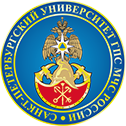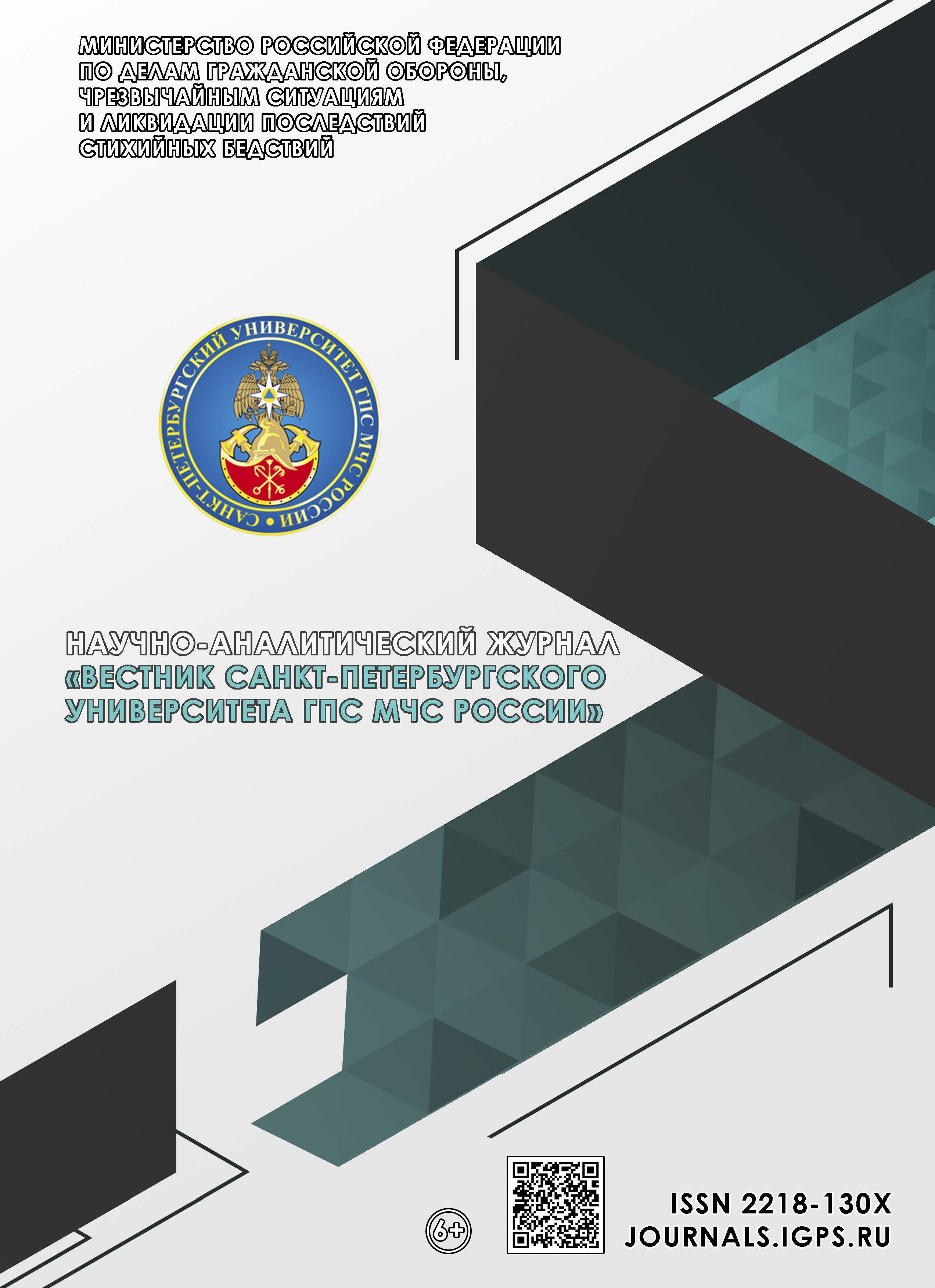Russian Federation
Russian Federation
Russian Federation
It is shown that the task of taking into account the impact of thermal radiation from a fire for determining safe distances for situating fire engines and choosing positions for firefighters during developing operational fire extinguishing plans for industrial buildings with enlarged window openings is not fully supported by the functionality of existing software systems. Since thermal radiation as one of the components of dangerous fire factors valuable only with a sufficient exposure, we analyze events tree branches associated with the process of diffusion combustion on the surface of a flammable liquid spill. Algorithms of the fire temperature regime module in the room of an industrial building with an enlarged window opening are presented based on an integral model and the module of the directional pattern of thermal radiation through window openings. The results of numerical modeling using the presented software product allow us to conclude that the effect of thermal radiation diaphragmization by window openings weakens with distance from the front of the heat-emitting surface and becomes negligible at distances of five meters and more.
thermal radiation of fire, safe distance, irradiation coefficient, window integral model of fire, fire load
1. Glubina tusheniya pozhara kak osnovanie dlya resursnogo obosnovaniya sil i sredstv pozharnyh podrazdelenij / A.N. Denisov [i dr.] // Internet-zhurnal «Tekhnologii tekhnosfernoj bezopasnosti». URL: http://ipb.mos.ru/ttb (data obrashcheniya: 26.04.2022).
2. Lazarenkov A.M., Ivanov I.A., Sadoha M.A. Issledovanie teplovogo faktora uslovij truda v litejnom proizvodstve // Lit'e i metallurgiya. 2022. № 2. S. 123-129. DOI:https://doi.org/10.21122/1683-6065-2022-2-123-129.
3. Mamaev V.V., Sokolyanskij V. Analiz rezul'tatov eksperimental'nyh issledovanij stojkosti kabin pozharnyh avtomobilej k vneshnim teplovym vozdejstviyam // Vestnik instituta grazhdanskoj zashchity Donbassa. 2015. Vyp. 2 (2). S. 16-25.
4. TOXI+Risk. URL: https://toxi.ru/produkty/ programmnyikompleks-toxirisk-5 (data obrashcheniya: 26.04.2022).
5. Programmnyj kompleks PK «Rus'» «Pozharnaya bezopasnost'». URL: https://reestr.minsvyaz.ru/reestr/100407/ (data obrashcheniya: 20.02.2022).
6. ANSYS FLUENT Solver Modeling Guide. Release 14.0. Pennsylvania, Canonsburg, 2011. 594 p.
7. Musin R.A., Telegina M.V., Yannikov I.M. Programma dlya rascheta intensivnosti teplovogo izlucheniya pri pozharah, svyazannyh s razlivom legkovosplamenyayushchihsya i goryuchih zhidkostej: Svidetel'stvo o gosudarstvennoj registracii programmy dlya EVM № 2019616242. Data registr. 21 maya 2019 g.
8. Telegina M.V., Yannikov I.M. Realizaciya informacionnoj sistemy rascheta teplovogo izlucheniya na pozharah // Intellektual'nye sistemy v proizvodstve. 2019. T. 17. № 4. S. 123-128.
9. NPB 105-03. Normy pozharnoj bezopasnosti. Opredelenie kategorij pomeshchenij, zdanij i naruzhnyh ustanovok po vzryvopozharnoj i pozharnoj opasnosti. M.: MCHS Rossii, 2003. 31 s.
10. Posobie po primeneniyu NBP 105-95 «Opredelenie kategorij pomeshchenij i zdanij po vzryvoopasnoj i pozharnoj opasnosti» pri rassmotrenii proektno-smetnoj dokumentacii / Yu.N. Shebeko [i dr.]. M.: VNIIPO MCHS Rossii, 2014. 119 s.
11. Hasanov R.M., Lishtakov A.A., Chistov Yu.S. Vliyanie rozliva goryuchej zhidkosti, ogranichennogo stenoj na intensivnost' teplovogo izlucheniya v zavisimosti ot rasstoyaniya do ochaga pozhara // Kazan'. Vestnik tekhnologicheskogo universiteta. 2017. T. 20. № 16. S. 99-101.
12. Algorithms Lewenberg-Markward // Machine Learning. URL: http://machine learning.ru/wiki/index.php (data obrashcheniya: 26.11.2022).
13. High R.W. The Saturn fireball / R.W. High // Annals of the New York Academy of Science. 1968. T. 152. № 1. S. 441-451.
14. Bader B.E., Donaldson A.B., Hardy H.C. Liquid-propellant rocket abort fire model // Journal of Spacecraft and Rockets. 1971. T. 8. № 12. S. 1216-1219.
15. Hasegawa K., Sato K. Experimental investigation of the unconfined vapor-cloud explosions of hydrocarbons // Technical memorandum of Fire Research Institute. Japan: Fire Research Institute: Fire Agency. 1978. № 12.
16. Makarov A.N. Zakony teploobmena elektricheskoj dugi i fakela v metallurgicheskih pechah i energeticheskih ustanovkah: monografiya. Tver': TvGTU, 2012. 164 s.
17. Goman P.N., Sobolevskaya E.S. Razrabotka programmy rascheta intensivnosti teplovogo izlucheniya na pozhare // Internet-zhurnal «Tekhnologii tekhnosfernoj bezopasnosti». URL: http://ipb.mos.ru/ttb (data obrashcheniya: 26.11.2022).
18. Romanenko P.N., Bubyr' N.F., Bashkircev M.P. Teploperedacha v pozharnom dele. M.: VIPTSH MVD SSSR, 1969.
19. Romanov N.N., Kuz'min A.A., Permyakov A.A. Spravochno-vychislitel'nyj modul' - pozharnaya teplofizika: Svidetel'stvo o registracii programmy dlya EVM RU 2020613155, 11.03.2020. Zayavka № 2020612037 ot 26.02.2020.







